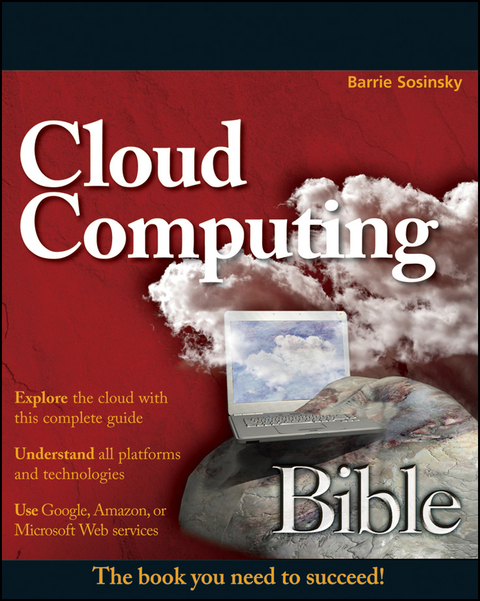Description
Efnisyfirlit
- Cover
- Title
- Copyright
- Dedication
- About the Author
- Credits
- Preface
- Acknowledgments
- Introduction
- How to Read This Book
- Icons
- Contacting Us
- Part I: Examining the Value Proposition
- Chapter 1: Defining Cloud Computing
- Defining Cloud Computing
- Cloud Types
- Examining the Characteristics of Cloud Computing
- Assessing the Role of Open Standards
- Summary
- Chapter 2: Assessing the Value Proposition
- Measuring the Cloud’s Value
- Avoiding Capital Expenditures
- Computing the Total Cost of Ownership
- Specifying Service Level Agreements
- Defining Licensing Models
- Summary
- Chapter 3: Understanding Cloud Architecture
- Exploring the Cloud Computing Stack
- Connecting to the Cloud
- Summary
- Chapter 4: Understanding Services and Applications by Type
- Defining Infrastructure as a Service (IaaS)
- Defining Platform as a Service (PaaS)
- Defining Software as a Service (SaaS)
- Defining Identity as a Service (IDaaS)
- Defining Compliance as a Service (CaaS)
- Summary
- Part II: Using Platforms
- Chapter 5: Understanding Abstraction and Virtualization
- Using Virtualization Technologies
- Load Balancing and Virtualization
- Understanding Hypervisors
- Understanding Machine Imaging
- Porting Applications
- Summary
- Chapter 6: Capacity Planning
- Capacity Planning
- Defining Baseline and Metrics
- Network Capacity
- Scaling
- Summary
- Chapter 7: Exploring Platform as a Service
- Defining Services
- Using PaaS Application Frameworks
- Summary
- Chapter 8: Using Google Web Services
- Exploring Google Applications
- Surveying the Google Application Portfolio
- Exploring the Google Toolkit
- Working with the Google App Engine
- Summary
- Chapter 9: Using Amazon Web Services
- Understanding Amazon Web Services
- Amazon Web Service Components and Services
- Working with the Elastic Compute Cloud (EC2)
- Working with Amazon Storage Systems
- Understanding Amazon Database Services
- Summary
- Chapter 10: Using Microsoft Cloud Services
- Exploring Microsoft Cloud Services
- Defining the Windows Azure Platform
- Using Windows Live
- Summary
- Part III: Exploring Cloud Infrastructures
- Chapter 11: Managing the Cloud
- Administrating the Clouds
- Cloud Management Products
- Emerging Cloud Management Standards
- Summary
- Chapter 12: Understanding Cloud Security
- Securing the Cloud
- Securing Data
- Establishing Identity and Presence
- Summary
- Part IV: Understanding Services and Applications
- Chapter 13: Understanding Service Oriented Architecture
- Introducing Service Oriented Architecture
- Defining SOA Communications
- Managing and Monitoring SOA
- Relating SOA and Cloud Computing
- Summary
- Chapter 14: Moving Applications to the Cloud
- Applications in the Clouds
- Applications and Cloud APIs
- Summary
- Chapter 15: Working with Cloud-Based Storage
- Measuring the Digital Universe
- Provisioning Cloud Storage
- Exploring Cloud Backup Solutions
- Cloud Storage Interoperability
- Summary
- Chapter 16: Working with Productivity Software
- Using Productivity Applications
- Online Office Systems
- Summary
- Chapter 17: Using Webmail Services
- Exploring the Cloud Mail Services
- Working with Syndication Services
- Summary
- Chapter 18: Communicating with the Cloud
- Exploring Instant Messaging
- Exploring Collaboration Technologies
- Using Social Networks
- Summary
- Chapter 19: Using Media and Streaming
- Understanding the Streaming Process
- Audio Streaming
- Working with VoIP Applications
- Video Streaming
- Summary
- Part V: Using the Mobile Cloud
- Chapter 20: Working with Mobile Devices
- Defining the Mobile Market
- Using Smartphones with the Cloud
- Summary
- Chapter 21: Working with Mobile Web Services
- Understanding Service Types
- Performing Service Discovery
- Using SMS
- Defining WAP and Other Protocols
- Performing Synchronization
- Summary
- End User License Agreement






Reviews
There are no reviews yet.